
© Natasha Razina. (Click image for larger version)
Mariinsky Ballet
Gala – Divertissement, Subject to Change, La Bayadere Act III
Baden-Baden, Festspielhaus
27 December 2012
www.mariinsky.ru
www.festspielhaus.de
The Mariinsky Ballet’s annual Baden-Baden tour is something of a balletomane’s winter retreat and, with mild weather to boot over Christmas, provided yet another opportunity this season to catch up with the St. Petersburg company. The usual Swan Lakes and Nutcrackers were on offer, but the final Gala is often the best opportunity to see a range of dancers, and while the 2012 vintage wasn’t the Mariinsky’s finest, it brought the year to a close with a reliable programme.
The divertissement section provided its usual hour of effervescent dancing, but the conservative programming was unfortunate, as all the pas de deux on offer had already been seen, some repeatedly, at this annual event. The Pas de Quatre, Tarantella, Tchaikovsky pas de deux, Grand Pas Classique and Don Quixote Grand Pas are particular culprits, and are disappointing choices in the light of the Mariinsky’s options: if the company is unwilling to tour Shurale, the Jakobson Spartacus or Balanchine’s A Midsummer Night’s Dream, excerpts from these ballets or from lesser-known works like Legend of Love or The Fountain of Bakhshisarai would be most welcome to spice up the proceedings.
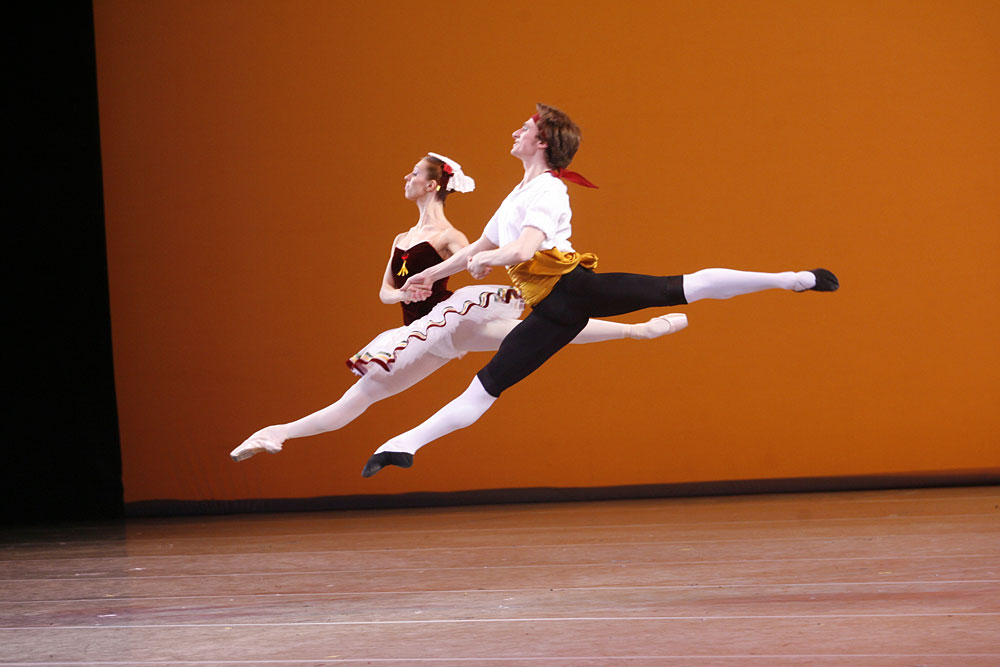
© Natasha Razina. (Click image for larger version)
As it is, the main interest lay with casting, despite the lack of turnover in the dancers used over the years. Two relatively new dancers managed to stand out, however. Viktoria Krasnokutskaya, who graduated from the Vaganova Academy in 2009, brought delicacy and freshness to the Lucine Grahn role in the Pas de Quatre, with a final entrechats series so light and joyous it prompted applause from the audience; her round face and blue eyes project far into the auditorium, and the hint of mystery in her expression works like a charm in Romantic roles. Filipp Stepin already has an impressive number of lead roles to his name, and he had quite the night in Baden-Baden with Tarantella and an unplanned turn in the pas de deux from Don Quixote following Vladimir Shklyarov’s unavailability. He let loose in the former, playing the part of the Italian lover with great rhythm and more than a hint of self-derision, and came back in Don Quixote to show state-of-the-art precision and form.
The rest of the programme was an opportunity to catch up with company stars, and above all the mighty Ekaterina Osmolkina, now well and truly back after a two-year absence. Her turn in the Talisman pas de deux was a pure, unfettered demonstration of Vaganova brilliance, airborne from start to finish, without so much as a hint of the hesitation others often betray at the conclusion of turns or before tricky sections; she is currently working her way back into her former repertoire, and one hopes she won’t be passed over for debuts and promotions in the future. Alexander Sergeyev tried just a little too hard, despite his catlike technique, alongside her, but returned with true modern flair in Yuri Smelakov’s Parting later on.
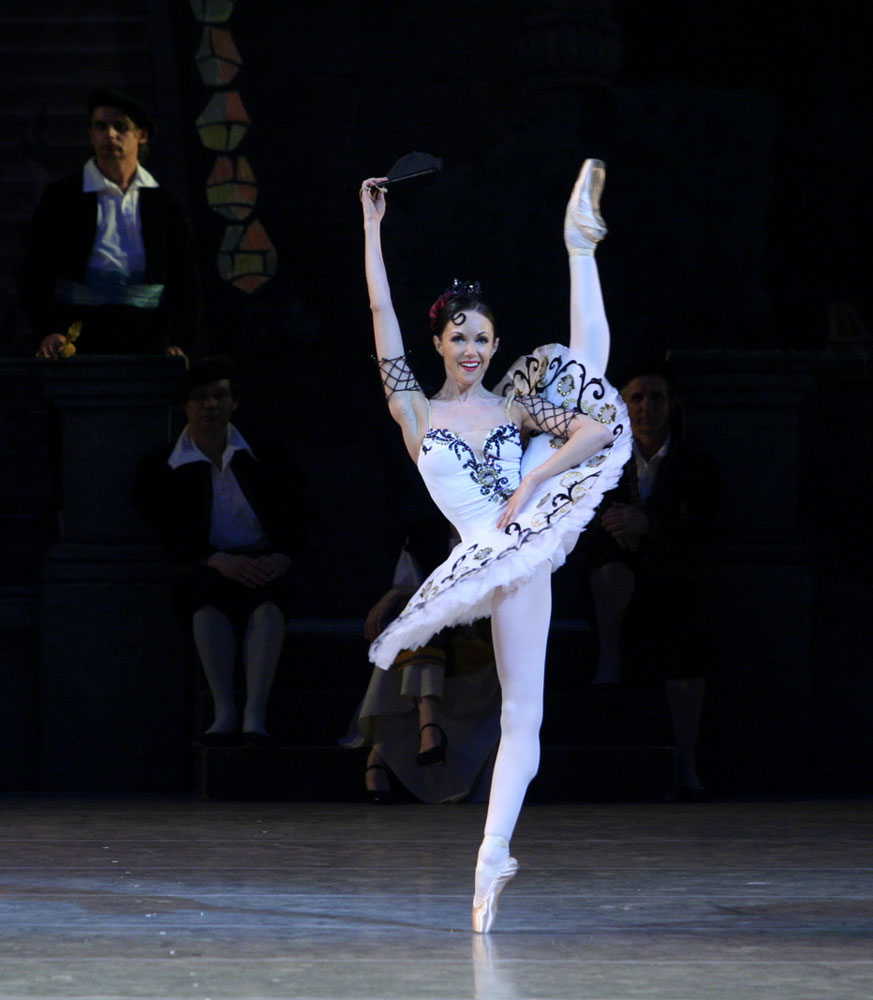
© Natasha Razina. (Click image for larger version)
The mighty Ekaterina Kondaurova, meanwhile, lent fierce, ruthless authority to her Grand Pas Classique with one of the company’s latest male finds, Timur Askerov, a former dancer with the Azerbaijan and Ukraine national companies who boasts a very smooth technique. More uneven were Maria Shirinkina in Tchaikovsky pas de deux, who was up to the choreography’s demands but looked worryingly thinner than usual, and Valeria Martynyuk, a natural Kitri who had a slightly tense night.
The evening switched gears after the first interval with Paul Lightfoot and Sol Leon’s Subject to change, a 2003 work Diana Vishneva has danced for a year or so as part of one of her personal projects, Dialogues. It may not technically be part of the Mariinsky’s repertoire, but as the only modern work of the evening, it was certainly welcome. Set to a Mahler arrangement of Schubert’s Death and the Maiden, it starts with four men in black, presumably figures of Fate, who slowly unroll a red carpet on which much of the dancing occurs. In a white negligee, Vishneva is the Maiden at the centre, performing, much like the Chosen One in The Rite of Spring, her dance of death as the men rotate the carpet or send waves rippling through it.
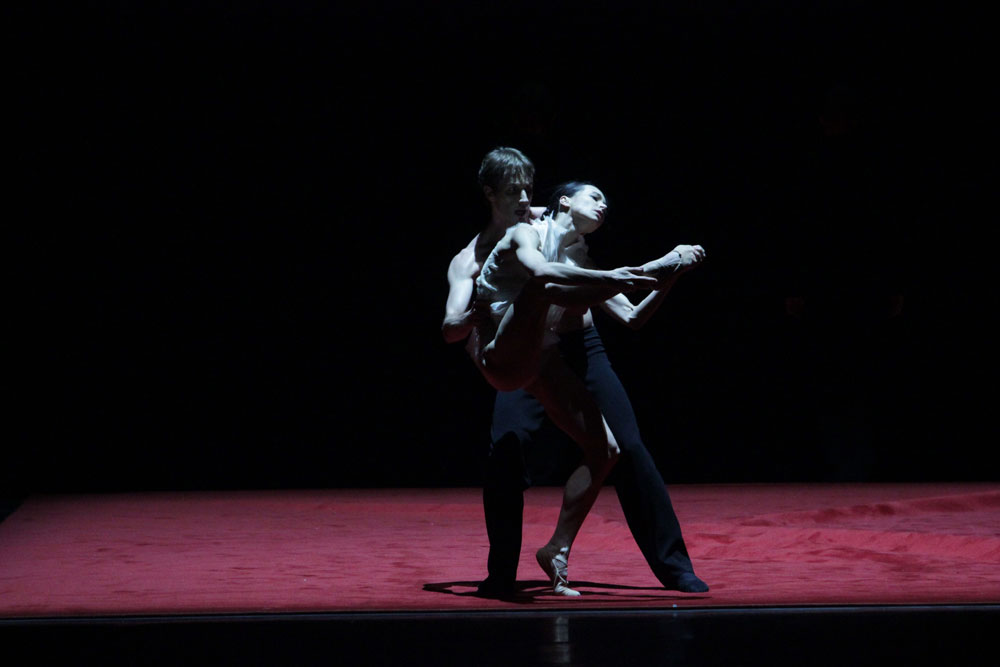
© Natasha Razina. (Click image for larger version)
Vishneva’s frequent partner, former Mariinsky and current Bolshoi soloist, Andrei Merkuriev, made an appearance to partner her through Lightfoot Leon’s hyperactive pas de deux, with their constant changes of direction and darting limbs, and both moulded the choreography to their bodies with superb results: Vishneva in particular takes the material to a level all her own, articulating it with her usual linear beauty without being afraid of looking ugly at the right moments. Despite the high production values, however, Subject to change isn’t quite as memorable as some of the Lightfoot/Leon works Nederlands Dans Theater recently showed in cinema broadcasts: the two choreographers’ style is too far removed from the tragic simplicity of the score and doesn’t develop over the course of the 20-minute work, but it remains a fine showcase for the ever-hungry Vishneva.
Not to be undone, however, the Mariinsky’s classical streak was back in time for the final piece, La Bayadère Act III. Unusually, the company chose to perform it with the rarely seen sets and costumes from Sergei Vikharev’s 2001 reconstruction of the 1900 production, which hasn’t been performed in St. Petersburg in a number of years; it’s a fascinating sight for the ballet enthusiast, but I must say the Imperial-style tutus, with their adorned bodices and heavier, bell-shaped skirts, seemed to take away from the scene’s purity out of context. The corps led by Svetlana Ivanova gave a fine demonstration, however, with less extreme leg lines in the descent than a few years back.

© Natasha Razina. (Click image for larger version)
The Mariinsky likes to court controversy with its choice of ballerinas, and its latest project and Nikiya of choice to close the engagement was Oksana Skorik, formerly known as the troubled, anorexic “star” of Perm Academy documentary A Beautiful Tragedy. In two or three seasons she has gone from small roles to debuts in Swan Lake, Giselle, Le Corsaire, La Bayadère and a steady stream of prestigious roles. Her exaggeratedly long, thin lines and small head are reminiscent of Yulia Makhalina and she used her physical attributes to beautiful effect in what was a solid Shades scene, but she projects very little on stage as of now; as Nikiya she looked either slightly scared or withdrawn, and barely acknowledged her partner, Danila Korsuntsev. It is anyone’s guess how her career will unfold, but the Mariinsky’s all-or-nothing approach in casting dancers is a little dispiriting, and the company’s current “defection” rate only serves to underline the issue.










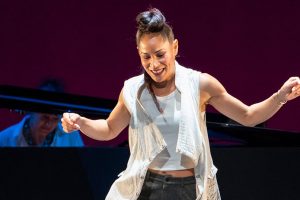
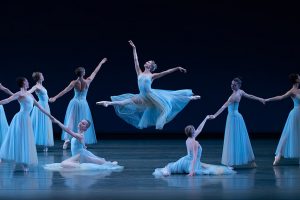


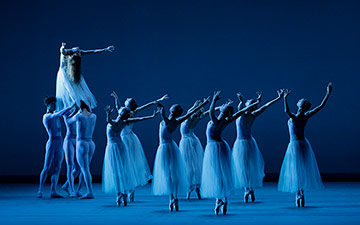

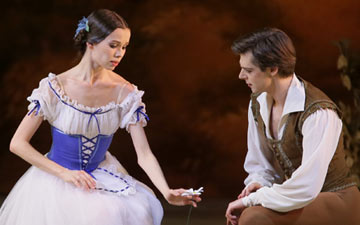
You must be logged in to post a comment.